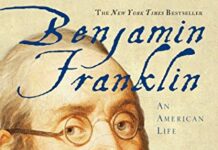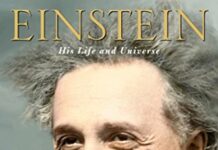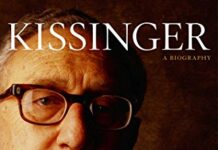
Ebook Info
- Published: 2012
- Number of pages: 873 pages
- Format: PDF
- File Size: 8.88 MB
- Authors: Walter Isaacson
Description
With a new introduction by the authors, this is the classic account of the American statesmen who rebuilt the world after the catastrophe of World War II.A captivating blend of personal biography and public drama, The Wise Men introduces six close friends who shaped the role their country would play in the dangerous years following World War II. They were the original best and brightest, whose towering intellects, outsize personalities, and dramatic actions would bring order to the postwar chaos and leave a legacy that dominates American policy to this day. The Wise Men shares the stories of Averell Harriman, the freewheeling diplomat and Roosevelt’s special envoy to Churchill and Stalin; Dean Acheson, the secretary of state who was more responsible for the Truman Doctrine than Truman and for the Marshall Plan than General Marshall; George Kennan, self-cast outsider and intellectual darling of the Washington elite; Robert Lovett, assistant secretary of war, undersecretary of state, and secretary of defense throughout the formative years of the Cold War; John McCloy, one of the nation’s most influential private citizens; and Charles Bohlen, adroit diplomat and ambassador to the Soviet Union.
User’s Reviews
Reviews from Amazon users which were colected at the time this book was published on the website:
⭐I couldn’t agree more with the reviewer who writes: “The authors practically genuflect upon every page in paying homage to those overlords who once reigned supreme in the American presidium of power and privilege.” (See the three-star review by anarchteacher.)In “The Wise Men,” authors Walter Isaacson and Evan Thomas weave together six biographies of the government officials who shaped US foreign policy from the time of the Great Depression to the tail end of the Cold War. Together, they created the bipartisan foreign policy consensus that prevailed after WWII, leading directly to the Vietnam War and all the other tragic East-West confrontations along the way. The authors call these policy makers the “wise men.” C. Wright Mills had another name for them: the “power elite.”Portrayed as highly educated, refined gentlemen, the wise men were as much pragmatic as visionary. They made things happen. Although they may have often disagreed about tactics, the wise men were united in their vision of the US government’s place in the world. This vision involved the rejection of “isolationism” and the establishment of a new, messianic role for the United States. Under their guidance, the United States would become the de facto world police man, waging war in the name of peace and meddling in the internal affairs of other countries. It is no accident that these men, particularly George Kennan, were also involved in the creation of the Central Intelligence Agency.The wise men were also instrumental in establishing the permanent war economy, which was a great boon for the military-industrial complex. The origin of this new militarized economy can be traced to National Security Council paper 68 (NSC-68). Approved of by Dean Acheson, this report exaggerated the threat posed by the Soviet Union in order to justify massive increases in government military spending.According to the wise men, know-nothing Americans who believed that they should mind their own business and stay out of foreign conflicts simply did not understand the complexities of a geo-political strategy that required them to fight and die in foreign lands. So the wise men informed their fellow Americans through friendly politicians and media outlets that they must fight to keep their families safe, to preserve peace, and, above all, to protect Freedom itself.Having been “educated by events,” as another court historian put it (see my two-star review of “Those Angry Days” by Lynn Olson), many Americans came to accept this new role for their country as “redeemer nation.” The wise men cleverly framed the issues of war and peace in such a way that not one in a thousand, perhaps, ever suspected that the US government fought its enemies in order to become more like them, or that the military interventions advocated by the wise men and like-minded politicians served to advance a hidden globalist agenda. (For the ugly details of this hidden agenda, see “Tragedy and Hope 101” by Joseph Plummer).The narrative in “The Wise Men” deceives as much as it enlightens. The authors insist that the wise men were responsible for making the big decisions. Short of that, they were the ones who built consensus on what to do — on where to aim the guns. They were the intellectuals in charge of foreign policy, the six friends who made the world as we know it (if we go by the book’s subtitle). The authors want us to believe that the wise men exercised tremendous power and influence, except, of course, when the wise men’s decisions had disastrous consequences. At these moments, when foreseeable and disastrous effects naturally follow their causes, the authors abruptly change their tune.The authors want us to believe that, at certain times, the wise men — these men of great power and influence who shaped our world — suddenly lost power, overwhelmed by circumstances beyond their control. Inexplicably, the tables turn. The wise men are now being shaped by the very world they intended to shape. For instance, by the authors’ own account, John J. McCloy, “Mr. Establishment” himself, clearly had a hand—perhaps the strongest hand—in the decision to forcibly remove thousands of Japanese-Americans from their homes and herd them into internment camps during WWII. According to the authors, just as McCloy was building a consensus on what to do, the decision-making process suddenly took on a life of its own. And the rest was history. Japanese-Americans were essentially kidnapped by the US government as a result of a decision-making process that existed independently of the decision-makers.The authors make the same assertion in the case of the decision to drop atomic bombs on Japan. Here again, at the crucial moment, the decision-making process magically takes on a life of its own, devoid of human agency.Attentive readers will not fail to notice how conveniently the authors slip back and forth between methodological individualism and holism whenever it seems that their “wise men” might come in for harsh criticism. Clearly, the authors are trying to distance the decision-makers from their own decisions. But any thinking person who is honest knows that people ALWAYS make decisions; they even make non-decisions or decisions not to act. Decisions never make themselves or go on auto-pilot. It is intellectually dishonest to suggest otherwise.Another inconsistency in the narrative can be found in the authors’ treatment of Dean Acheson. The authors remind us repeatedly of Acheson’s aversion to the United Nations (UN) and his dismissal of all such attempts at world government as “glabaloney.” But how do the authors reconcile Acheson’s purported aversion to globalism with his rushing off to the UN to secure an official condemnation of North Korea when it invaded South Korea? They don’t, and they make no effort to do so.I take it that most people will agree that actions speak louder than words. Acheson, despite his lip service to nationalism, paved the way for U.S. military intervention in Korea to proceed under the auspices of the UN, without a declaration of war by Congress. In doing so Acheson helped undermine constitutional limits on executive war-making power, as well as national sovereignty (to the extent that the US is supposed to be governed by its own Constitution, its own laws).But the authors do not seem to notice this glitch in the Matrix. And like good court historians, they ignore the inconsistency and sweep Acheson’s duplicity under the rug in their rush to flatter the naked emperor.The authors also defend Acheson in his willingness to share “the bomb” with the Soviet Union. This boggles the mind, since by that time Stalin had revealed himself to be a homicidal psychopath who had no qualms about starving to death 7 million people in Ukraine as a matter of public policy, not to mention the mountain of corpses he climbed over to achieve and maintain power within the Communist Party. Go ask Trotsky.Was Acheson insane? Of course not. He, too, was a career-driven psychopath who understood that the Cold War and the attendant military expansion could not proceed with only one side in possession of the bomb. It would be a total mismatch. A “bomb challenged” Soviet Union would not sufficiently frighten Americans into supporting massive increases in military spending. However, it wasn’t long before Acheson’s dream came true and he got the existential threat to his own country he was craving. Sharing the bomb with the Soviets was all part of the plan to advance Acheson’s globalist agenda. After all, Oceania needs its Eurasia. And the military-industrial complex needs to justify its existence and further expansion at the expense of US taxpayers.Replacing George Kennan as head of the State Department’s policy planning staff was honorary wise man Paul Nitze. Nitze, in a fit of honesty, revealed the true meaning of the Soviet bomb. According to the authors, “…[Nitze] told Acheson that the real lesson of the Soviet bomb was not merely that the U.S. should proceed with the Super [bomb], but that it should build up conventional forces. The bomb was no longer enough to keep the Soviets in check. …To Nitze, the real mission became clear; to wake up the Administration and the Congress and make them spend more money, much more money, on defense” (p. 489). And there you have it, folks. Mission accomplished.”The Wise Men” is thus propaganda at its finest: partly illuminating, partly misleading, and wholly biased in its celebration of that cabal of power elites who pursued their globalist visions at the cost of American blood and treasure, precipitating the decline of America’s economy and the country’s descent into a regimented Orwellian police state.Today, the US continues to wage war in the name of peace to the detriment of working Americans who bear the costs of Empire and the “globaloney” fantasies of elite policy makers, not to mention the countless victims of imperial aggression overseas, e.g., Afghanistan, Iraq, Libya, Pakistan, Yemen, Syria, etc. And this is perhaps where the legacy of the wise men is most painfully felt.
⭐As someone who is to the right politically than the authors I was happily surprised by how much I enjoyed this book. I felt as though the authors missed the boat with Reagan and his relationship to the soviets, thankfully it was a very small part of the overall book. The authors suffered from a 1980s liberal anathema of all things Reagan and history proved them wrong about the efficacy of his policies. The antipathy towards Reagan has the authors offering up an almost naive view of the Soviets and it was my only issue with the book. Common sense AND HISTORY proves my point and is shown by the benign attitude the authors have towards Yuri Andropov, a former KGB head and a serious problem regarding freedom for people in Eastern Europe, and for the world.Having said my piece above I still give the book 5 stars due to how much I loved how the authors gave us the feel of the times and how our six heroes dealt with all of it’s issues and crises.Being a Dean Acheson fan I found his part of the book fascinating and it just reinforced all of my prior thoughts about this giant of the 20th century. I feel as if there should be a movie made of Acheson as a way to introduce him to today’s students and others…but I know it will never happen. Anyone who doesn’t know Dean Acheson should read some books by or about him.Being a fan of the time period I of course was familiar with Averell Harriman, but I wasn’t aware of exactly what a giant of the times he was. As the book progressed I found myself thinking that he was an opportunist, a man that wanted “it” to be all about him, but as the book progressed I came to respect him more and more. This is especially true when he did not get his coveted Secretary of State position and yet never tried to torpedo Acheson, who did get the job. This is so unlike today and that is a shame. Harriman kept on and kept on and I found him also fascinating. His desire for diplomatic means of solving problems was legendary.I found Chip Bohlen to be totally enjoyable, cool and as “hip” as anyone from today…he came across as timeless. The picture of him and JFK driving down the street, Kennedy with his shades on and at the wheel showed the man perfectly.Robert Lovett as someone I had never heard of and yet he was also a huge force during momentous times. Almost as rich as Harriman, but not nearly as stuffy, his part was a great part of the book as well.As someone who followed foreign affairs a bit I was very familiar with George F, Kennan (Mr. X) but I was surprised by his being so sensitive with regard to being insecure. A great mind and perfect for the early cold war period.John McCloy was someone who is so underrated when discussing historic people of the second half of the 20th century. He combined public and private service that could (and should) never be allowed today, but his contribution was huge and very positive and that is why so many presidents called on him for assistance.Anyone who is interested in WWII, the Cold War, the Korean War and the Vietnam War should read this book. Anyone interested in high society in the 20s thru the 80s should read this book. It was a different time, but we would not be us without how well our country handled events and how these man contributed to the world.
⭐This is the MOST insightful set of interwoven biographies of the most influential “establishment” players that perhaps more so than any single president, war, or macroeconomic transitions, defined and executed US foreign policy, and by proxy, monetary policy for almost the entirety of the 20th century.Never have I understood the transition of the national mindset from Teddy Roosevelt, FDR, LBJ, culminating in tricky-dicky Nixon until I read this book.It is hard to keep track of all the information but extremely rewarding for the effort in understanding “how we got here”.
⭐This is a very enjoyable history of the origins of the cold war and national security policy making into the 70s. It’s much better at covering the period between 1944 to the mid 50s than it is for the later stuff, partly because the protagonists had a more central role earlier and then found themselves on the periphery. Discussing Vietnam policy making through the experiences of the six leaves a lot undiscussed, but it isn’t bad.The early chapters are not particularly interesting, except from the fact that they provide a vivid and surprising insight into the world of the east-coast aristocracy (1st half 20C), which is probably necessary for a full appreciation of what follows.Apart from the less informative later chapters, the only other grievance that I can cite is the fact one does get the impression that the authors have been a little less critical of their subjects (and JFK) than is reasonable. It is also perhaps too harsh on LBJ.
⭐Everyone should read this book – how America & Israel shaped and own the financial markets
⭐Eye opening read
⭐A must read for the student of the Cold War
⭐A good walkthrough recent American history
Keywords
Free Download The Wise Men: Six Friends and the World They Made in PDF format
The Wise Men: Six Friends and the World They Made PDF Free Download
Download The Wise Men: Six Friends and the World They Made 2012 PDF Free
The Wise Men: Six Friends and the World They Made 2012 PDF Free Download
Download The Wise Men: Six Friends and the World They Made PDF
Free Download Ebook The Wise Men: Six Friends and the World They Made


